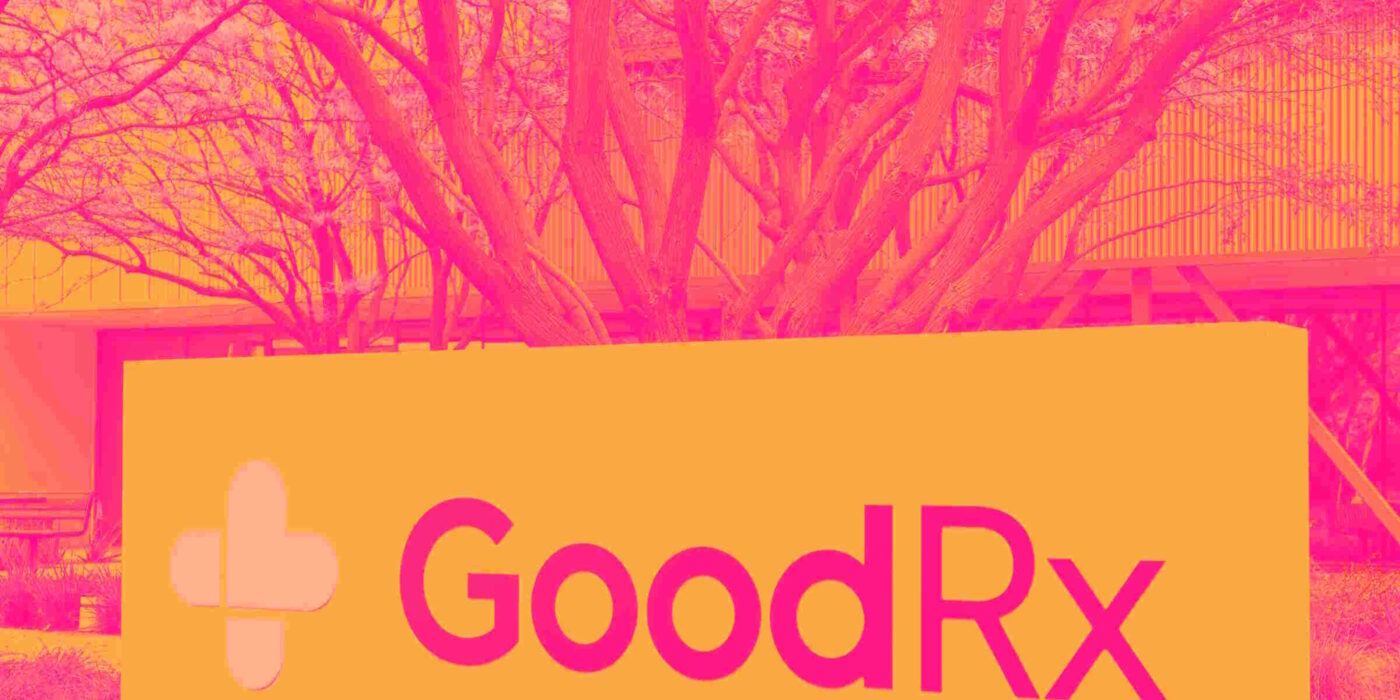
Healthcare tech company GoodRx (NASDAQ: GDRX) missed Wall Street’s revenue expectations in Q2 CY2025 as sales only rose 1.2% year on year to $203.1 million. Its non-GAAP profit of $0.09 per share was in line with analysts’ consensus estimates.
Is now the time to buy GDRX? Find out in our full research report (it’s free).
GoodRx (GDRX) Q2 CY2025 Highlights:
- Revenue: $203.1 million vs analyst estimates of $205.7 million (1.2% year-on-year growth, 1.3% miss)
- Adjusted EPS: $0.09 vs analyst estimates of $0.10 (in line)
- Adjusted EBITDA: $69.4 million vs analyst estimates of $70.62 million (34.2% margin, 1.7% miss)
- EBITDA guidance for the full year is $270 million at the midpoint, below analyst estimates of $279.7 million
- Operating Margin: 13.2%, up from 9.9% in the same quarter last year
- Customers: 5.7 million, down from 6.4 million in the previous quarter
- Market Capitalization: $1.32 billion
StockStory’s Take
GoodRx’s second quarter results were met with a negative market reaction, as the company’s revenue fell short of Wall Street’s expectations and adjusted profit matched consensus. Management attributed the underperformance largely to two external events: the accelerated Rite Aid bankruptcy, which removed a sizable number of stores from pharmacy networks, and an abrupt volume decline in one of its integrated savings programs with a major pharmacy benefit manager (PBM). CEO Wendy Barnes noted these developments “caused immediate cessation in the associated claims volume,” and highlighted the company’s ongoing efforts to recapture lost consumers and stabilize prescription transaction trends.
Looking forward, GoodRx’s guidance reflects caution due to persistent industry headwinds, including ongoing pharmacy network disruptions and evolving PBM relationships. Management is focused on leveraging new partnership models, expanding its pharma manufacturer solutions, and launching targeted subscription products to improve revenue mix and margin durability. CFO Chris McGinnis emphasized that while near-term growth is pressured, “investment into these strategic initiatives will drive durable, profitable future growth,” with a particular focus on expanding direct relationships with pharmacies and building out branded drug access programs.
Key Insights from Management’s Remarks
Management cited two major external disruptions—Rite Aid’s bankruptcy and a PBM program restructuring—as the main drivers behind weaker transaction volumes. They also pointed to strong momentum in pharma manufacturer solutions and progress in retail partnerships as offsetting factors.
- Pharma manufacturer solutions surge: Revenue from manufacturer solutions grew 32% year-over-year, as GoodRx deepened relationships with pharmaceutical brands and demonstrated a strong return on investment for partners through direct-to-patient engagement and targeted affordability programs.
- Rite Aid bankruptcy impact: The sudden closure of over 800 Rite Aid stores and removal from PBM networks led to an immediate drop in claims volume, with management actively working to recapture displaced customers through direct outreach and partnerships with acquiring pharmacies.
- PBM integrated savings disruption: A volume decline in one of GoodRx’s integrated savings programs, driven by a PBM partner’s internal restructuring, was a notable headwind. Management described this program as an important entry point for growth but acknowledged its limitations due to PBM control over implementation.
- Retail partnership expansion: New contracts were signed with multiple pharmacy retailers, including e-commerce integrations and at-the-counter solutions, a move designed to increase GoodRx’s visibility and reduce reliance on any single partner or channel.
- Leadership changes and strategy shift: Laura Jensen was named Chief Commercial Officer and President of Pharma Solutions, bringing experience from Amazon Pharmacy and PillPack. This appointment is expected to accelerate direct-to-pharmacy and manufacturer initiatives, aligning with broader industry shifts toward consumer-focused drug pricing.
Drivers of Future Performance
GoodRx’s outlook is shaped by its focus on expanding subscription offerings, strengthening pharma manufacturer relationships, and adapting to persistent changes in pharmacy networks and PBM dynamics.
- Subscription product expansion: Management plans to launch new condition-focused subscription services, such as weight loss and hair loss treatments, leveraging GoodRx’s large existing user base and aiming for lower customer acquisition costs compared to dedicated direct-to-consumer competitors.
- Pharma and PBM partnership evolution: The company is shifting toward direct engagement with both pharma manufacturers and employers, targeting brand drug access and improved point-of-sale pricing. Management believes this could offset recent PBM program headwinds, though most benefits are expected to materialize in 2026.
- Cost controls and margin focus: To maintain profitability amid pressured revenue, GoodRx has reallocated resources, reduced workforce size, and prioritized strategic initiatives with higher operating leverage. The company is also investing in marketing to support upcoming product launches and recapture lost customers from recent disruptions.
Catalysts in Upcoming Quarters
Looking ahead, the StockStory team will watch (1) how quickly GoodRx can recapture lost prescription volume from Rite Aid store closures and PBM disruptions, (2) evidence that pharma manufacturer solutions sustain 30%+ growth as more brands adopt direct-to-patient pricing, and (3) the uptake and profitability of new subscription products in conditions beyond erectile dysfunction. Continued execution on digital pharmacy integrations and employer partnerships will also be key indicators of progress.
GoodRx currently trades at $3.44, down from $4.35 just before the earnings. Is the company at an inflection point that warrants a buy or sell? The answer lies in our full research report (it’s free).
Stocks That Trumped Tariffs
When Trump unveiled his aggressive tariff plan in April 2025, markets tanked as investors feared a full-blown trade war. But those who panicked and sold missed the subsequent rebound that’s already erased most losses.
Don’t let fear keep you from great opportunities and take a look at Top 9 Market-Beating Stocks. This is a curated list of our High Quality stocks that have generated a market-beating return of 183% over the last five years (as of March 31st 2025).
Stocks that made our list in 2020 include now familiar names such as Nvidia (+1,545% between March 2020 and March 2025) as well as under-the-radar businesses like the once-micro-cap company Tecnoglass (+1,754% five-year return). Find your next big winner with StockStory today.
StockStory is growing and hiring equity analyst and marketing roles. Are you a 0 to 1 builder passionate about the markets and AI? See the open roles here.






